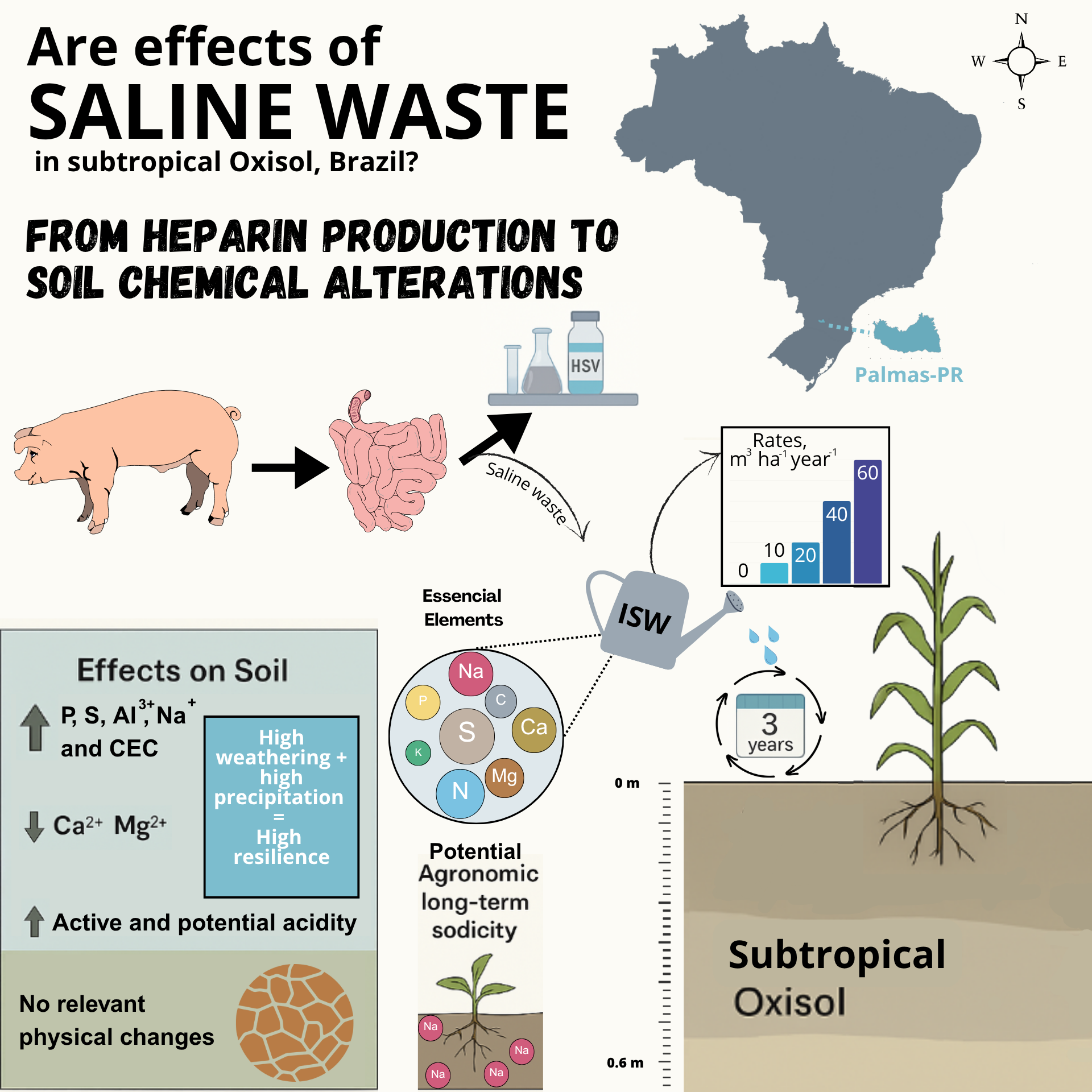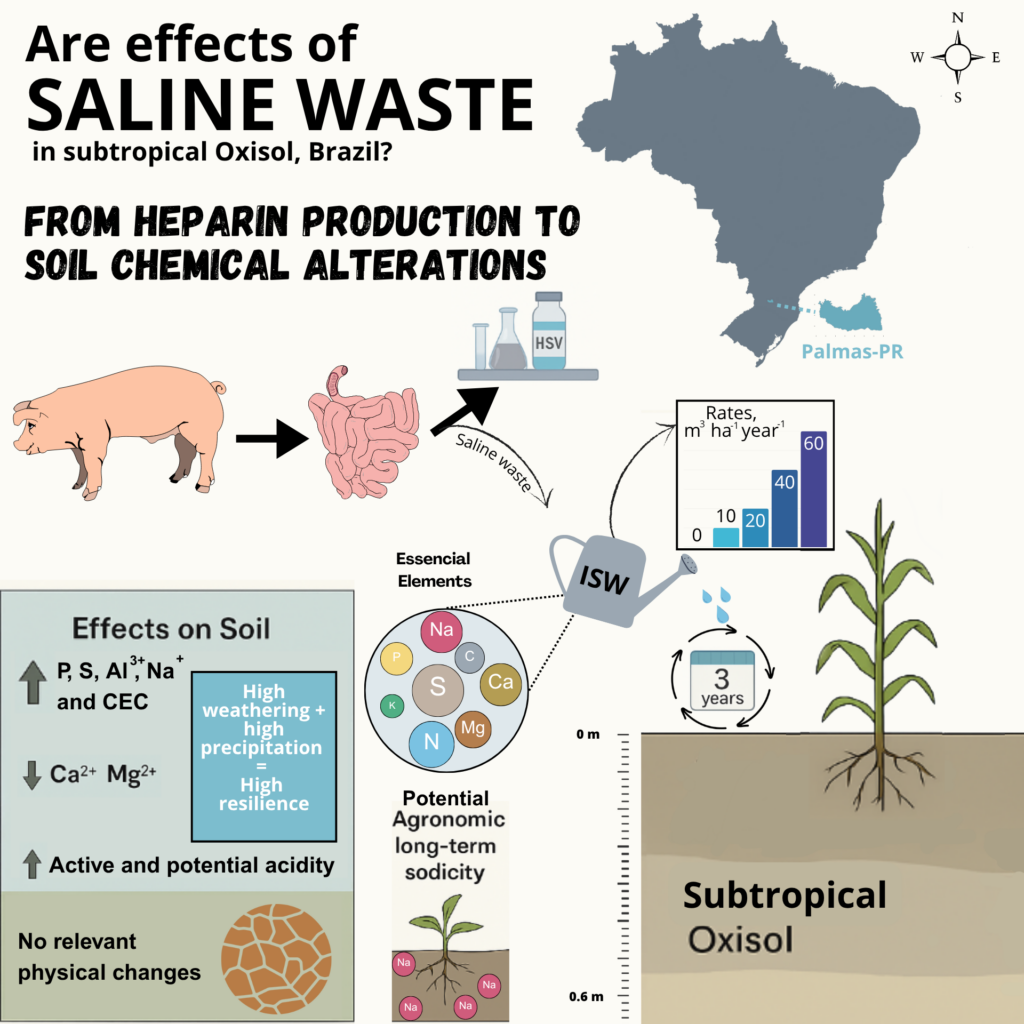Rev. Bras. Ciênc. Solo.2025;49:e0240237.
The impact of continuous application of industrial saline wastewater from heparin production in a Brazilian subtropical Oxisol
31/Oct/2025
DOI: 10.36783/18069657rbcs20240237
Graphical Abstract

Highlights
Saline wastewater does not alter soil texture, porosity, or hydraulic conductivity.
Saline wastewater increases the soil fine clay fraction relative to total clay.
Saline industrial waste decreases the soil pH, Ca and Mg and increases Al, P, S and Na.
ABSTRACT
One considerable concern arises from saline wastewater resulting from the production chain of the anticoagulant drug heparin. This waste contains a high concentration of sodium (Na, 2400 mg L-1), which can negatively influence soil structure. Simultaneously, it possesses a rich organic carbon content and nutrients that are beneficial to agricultural systems. This study sought to assess potential changes in physical and chemical properties, as well as soil mineralogy resulting from the application of varying proportions of industrial saline wastewater (ISW) from the heparin production industry. A field experiment was established on an Oxisol (Latossolo Bruno Distrófico) in southern Brazil in 2017, with heparin waste applied at rates of 0, 10, 20, 40, and 60 m3 ha-1 yr-1. After three years, deformed and undeformed soil samples were taken for physical, chemical, and mineralogical analyses. While other physical properties (soil texture, porosity and hydraulic conductivity) remained unaffected, the application of residue increased the fine clay to total clay ratio (mean increase of 13 % in the 0.00-0.20 m layer) and reduced soil bulk density (up to a 6 %) after three applications of ISW with the highest rate used (60 m3 ha-1 yr-1), suggesting the onset of particle dispersion. Exchangeable Na content in the soil increased (mean increase of 450 % in the 0.05-0.60 m layer) after heparin residue application, although it remained within the limits for sodicity (Na saturation 6 %). Residue acidified the soil, reduced exchangeable cation content, and increased the levels of available phosphorus, sulfur and exchangeable aluminum. Our results suggest that the application of ISW does not affect macroscopic physical parameters; however, a slow process of soil particle dispersion is occurring after three years of ISW applications. Furthermore, the high precipitation environment contributes to mitigating the impacts on soil physical quality, in addition to the fact that the soil is a highly weathered Oxisol and exhibits high physical resilience. Nevertheless, ISW alters soil chemistry by reducing the availability of essential nutrients and increasing acidity parameters.
117

